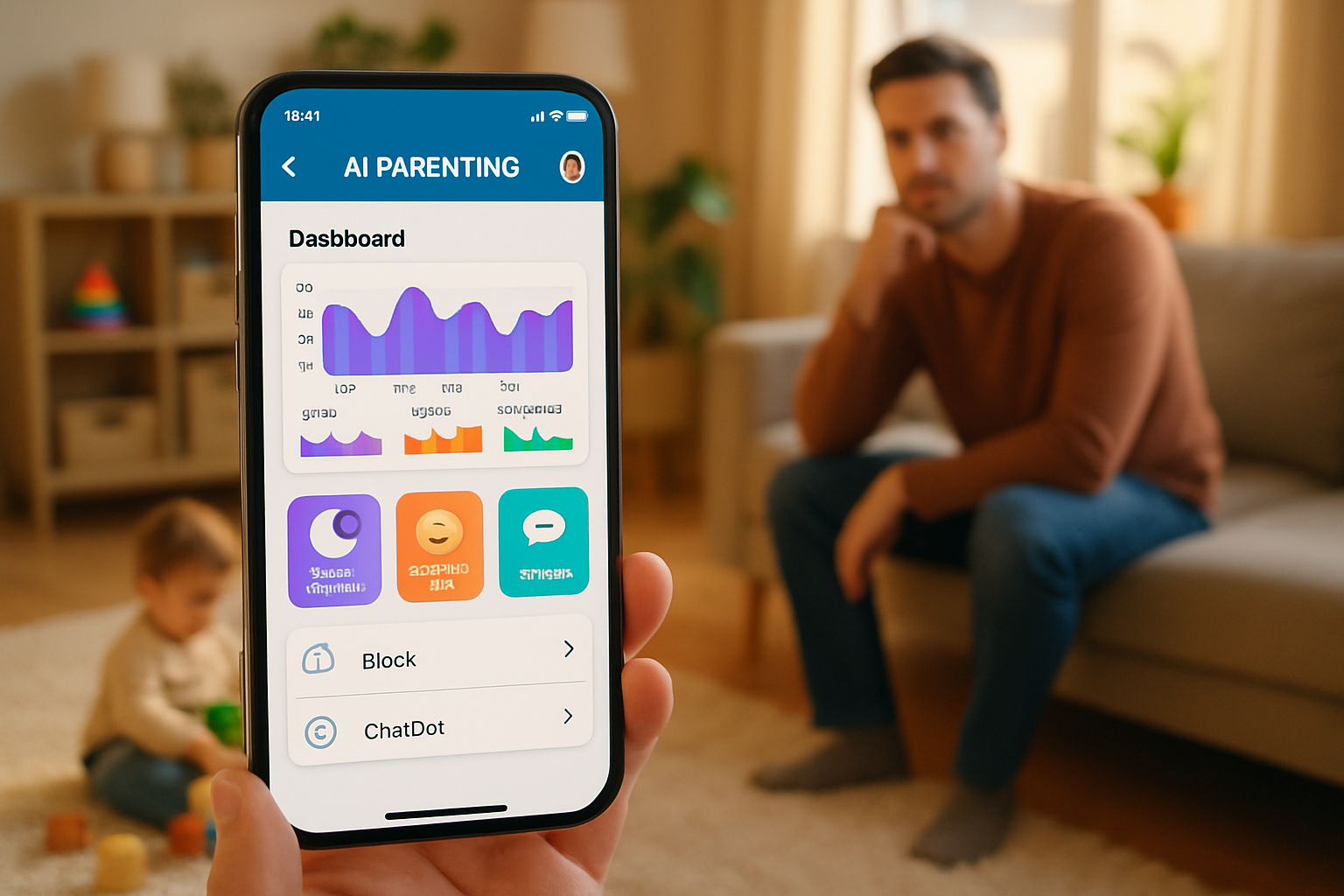Service that suites your needs
Our custom software development process revolves around an AI-centric approach, enhancing user experiences and delivering highly efficient solutions through advanced artificial intelligence technologies.
.png?width=292&height=132&name=Image%20(3).png)
Our custom software development process revolves around an AI-centric approach, enhancing user experiences and delivering highly efficient solutions through advanced artificial intelligence technologies.
.png?width=292&height=132&name=Image%20(3).png)
At Phyniks, we combine AI and creativity to drive innovation. Our tailored solutions yield extraordinary results. Explore our knowledge base for the latest insights, use cases, and case studies. Each resource is designed to fuel your imagination and empower your journey towards technological brilliance.
.png?width=284&height=129&name=Image%20(4).png)
At Phyniks, we combine AI and creativity to drive innovation. Our tailored solutions yield extraordinary results. Explore our knowledge base for the latest insights, use cases, and case studies. Each resource is designed to fuel your imagination and empower your journey towards technological brilliance.
.png?width=284&height=129&name=Image%20(4).png)

Are you a tech founder scratching your head over how to break into the parenting-tech space?
Wondering how to translate the idea of an AI-powered parenting app into reality, with all the features, costs and practicalities laid out? You’re not alone.
The market for parenting applications is heating up.
For instance, the global parenting apps market is projected to grow from around USD 2 billion in 2023 to USD 5.5 billion by 2033. Meanwhile, the niche of “AI in childcare and parenting” is estimated to reach USD 35.2 billion by 2034, at a CAGR of about 22.4%.
Given that growth, now is a strategic moment to build a solid AI parenting app.
It’s like creating a world where parenting stress is cut in half!
"Did I do this right? Am I setting a good example? Why is my toddler suddenly refusing to sleep?"
If you're a parent, you know the questions never stop. It's an exhausting, beautiful, and often overwhelming journey. We're living in the age of instant information, yet finding personalized, reliable, and non-judgmental advice for your unique child can feel like searching for a needle in a haystack.
Here’s a startling fact: According to a 2023 study, over 70% of parents report feeling overwhelmed by the sheer volume of conflicting parenting advice available online. And this is where the magic of technology steps in.
The truth is, the next big wave in digital family support isn't just another checklist or diary, it’s the AI parenting app.
Ready to ride that wave?
In this article, we'll walk you step-by-step through how to build one, from defining scope and features to estimating cost and choosing tech stack.
Before diving into development, let’s raise some pointers on why building an AI parenting application (or parenting app with AI capabilities) is a smart move:
The digital landscape is already saturated with basic parenting apps offering milestone tracking and feeding logs. To truly capture market share and provide genuine value, your application must go deeper. This is where AI for parenting becomes the essential differentiator.
But what exactly does AI add?
Think of AI not as a robot, but as a hyper-efficient, non-judgmental personal assistant who has read a million parenting books and analyzed a billion data points.
A traditional app might offer an article on "how to handle tantrums." An AI parenting App does this better:
This shift from generic information to dynamic, predictive, and personalized guidance is the core of successful AI parenting app development.
Here we’ll structure the key phases you’ll go through under the umbrella of “parenting app development” with AI added.
In this section we outline the features you’ll likely include for a full-flavoured AI parenting app, grouped into “must-haves” vs “nice-to-haves”.
Must-Have Features for any Parenting App
AI-Enabled Features (to make it an “AI parenting app”)
UI/UX & supporting features
Let’s talk money. When you take the phrase “parenting app development” and add AI, the cost range becomes wider. Based on recent reports:
Key cost-drivers include:
| Tier | Feature set | Estimated cost* |
|---|---|---|
| Basic MVP | Profile, tracking, reminders, content library | USD 10,000– USD 20,000 |
| Mid-Tier | Adds AI recommendations, child analytics, basic chatbot | USD 40,000- USD 50,000 |
| Advanced | Full AI (emotion/behaviour detection), wearables integration, multi-child/co-parent, premium subscription, IoT | USD 50,00- USD 90,000 |
| Phase | Timeline | Estimated Cost (USD) |
|---|---|---|
| Research & Planning | 2–4 weeks | $3,000 – $8,000 |
| UI/UX Design | 3–6 weeks | $5,000 – $15,000 |
| Core Development | 4–8 months | $20,000 – 80,000 |
| AI & Data Integration | 2–4 months | $10,000 – $50,000 |
| Testing & QA | 1–2 months | $5,000 – $15,000 |
| Compliance & Security | Ongoing | $5,000 – $20,000 |
| Deployment & Launch | 2–4 weeks | $2,000 – $8,000 |
| Maintenance & Updates | Ongoing | $2,000 – $12,000 / month |
Average total cost to develop a full-fledged AI parenting app ranges between $40,000 and $150,000, depending on complexity, integrations, and team location.
Building an AI parenting app doesn’t always need a six-figure budget right away. With smart planning and execution, you can significantly cut costs without compromising on performance or user experience. Here are some effective strategies:
Instead of building a fully loaded AI parenting app in one go, start small. Focus on 3–5 key features that solve your users’ biggest pain points, like child routine tracking, reminders, and AI-based insights. Launching an MVP first allows you to validate the idea, get real-world feedback, and attract early investors before spending heavily on complex AI integrations.
Developing separately for iOS and Android doubles your costs. Frameworks like Flutter or React Native let you build once and deploy across both platforms, reducing development time and expenses by up to 40%.
Building AI models from scratch is costly. Instead, use pre-trained models or APIs (like OpenAI, TensorFlow Hub, or Google Dialogflow) for chatbots, recommendations, and predictive analysis. This approach speeds up development and cuts down on data-training costs.
Hiring an in-house development team can be expensive. Outsourcing to a reliable AI development firm with domain expertise, especially in cost-efficient regions, can save 30–50% of total project costs while maintaining quality.
Avoid overloading your first release with fancy features. Begin with essentials like AI-powered tips, habit tracking, and reminders. Add advanced modules like emotion detection or IoT integrations later once you have traction.
Manual testing eats into budgets. Automated testing tools (like Appium or Selenium) reduce QA time. Similarly, cloud services (AWS, Azure, or Google Cloud) help you scale cost-efficiently without heavy infrastructure investments.
Once live, track user engagement, crashes, and feature usage. Eliminating underused features and optimizing backend processes keeps maintenance costs predictable and manageable.
Let’s talk features in a user-facing way (so your design and copy team can imagine them).
01. Child profile and tracking
Parents create a profile for each child: name, age, stage, photo.
Track sleep, feeding, diaper changes (for infants); activity, screen time, mood for older children.
Visual timeline: e.g., “Your toddler slept 10 hrs last night (trend down 0.5 hrs)”.
02. Smart routine-builder (AI)
Based on tracking data + child’s age + sleep-needs + parent’s constraints, the app suggests a routine.
E.g., “It looks like your child tends to wake at 6:30 am; how about adjusting bedtime to 8:15 pm?”
Routine can adjust if pattern changes or when parent gives feedback.
03. Chatbot parenting assistant
Parent asks: “My 4-year-old is refusing to eat vegetables- what should I do?”
The AI assistant offers tailored advice: flow-charts, steps, links to content, maybe reminders.
Keeps conversation history, personalises over time.
04. Alerts & predictive support
The app notices patterns: e.g., fewer than 7 hrs sleep for 3 nights = “Your child’s sleep is below pattern, here are 3 tips to help rebound”.
If screen time passes threshold: “It looks like screen time exceeded 2 hrs., consider switching to outdoor play for 30 mins”.
05: Content library + learning modules
Tips, articles, videos organised by child’s age & stage.
AI recommends “You might like” based on user behaviour.
Possibly premium content: deep-dives, live webinars with experts.
06. Co-parent & sharing support
Multiple users (parent, co-parent, grandparent) with access and roles.
Ability to share child’s progress, routines, schedule.
Group chat / community forum: parents connect with other similar-stage parents.
07. Wearables/sensors integration (optional but powerful)
If you want to integrate IoT: connect baby monitor or child wearable that tracks sleep, movement, ambient conditions.
Data fed into AI to improve recommendations.
08: Security & parental controls
Strong privacy settings: what data is stored, shared, visible.
Authentication: biometric, two-factor for parents.
Option to delete child’s data permanently.
09. Monetisation features
Freemium model: Free layer covers core tracking & content. Premium layer unlocks AI assistant, advanced analytics, wearables integration.
In-app purchases: e.g., single-topic deep-dives ("Sleep training for toddlers").
Partnerships: baby-product brands, paediatric clinics may sponsor or integrate with the app.
Building the app is half the battle. The other half is getting traction and retention in a competitive space of “parenting apps”.
If you’re thinking “Should I hire internal team or partner with a specialist?”, here are reasons to go with a development firm (especially for AI parenting app):
If you’re looking for a partner who understands building custom AI solutions for parenting or similar domains, reach out to us. We specialise in custom IT solutions and can help you shape the roadmap, build the app, and scale.
Here’s a quick checklist you can bookmark:
[ ] Define target parent-persona & child-age-segment.
[ ] Draft value proposition: what will your app solve that others don’t?
[ ] List MVP features, plus AI features for later versions.
[ ] Estimate rough budget and timeline (based on cost ranges above).
[ ] Choose tech stack & team (in-house or partner).
[ ] Create privacy/data-security plan (child-data sensitive).
[ ] Build landing page + early access signup.
[ ] Plan marketing: content calendar, influencer/parenting community outreach.
[ ] Launch MVP quickly, collect feedback, iterate.
[ ] Build AI-powered features in subsequent version.
[ ] Monitor user engagement, retention, monetisation metrics.
[ ] Scale: add languages, platforms, devices, premium features.
Final Thoughts
Building an AI parenting app is no small feat but the market signals are clear: parents are looking for smarter support, richer features and more personalization. By combining strong parenting-domain understanding + robust technology (especially AI) + excellent UX + a clear business model, you can carve out a meaningful space.
As you plan your roadmap, budget realistically, focus on MVP first, prioritise user engagement and privacy and build with scalability in mind. When you’re ready, partnering with a capable AI development firm can accelerate your path. If you’re exploring such a route, we are ready to help you take your idea from concept to launch.
Let’s turn your vision of a true AI parenting companion into an app that parents love and trust.

Sign up for Links for Thinks — a weekly roundup of resources like this to help you uplevel your design thinking straight to your inbox
We'd love to hear from you! Whether you have a question about our services, want to discuss a potential project, or just want to say hi, we are always here to have meaningful conversations.